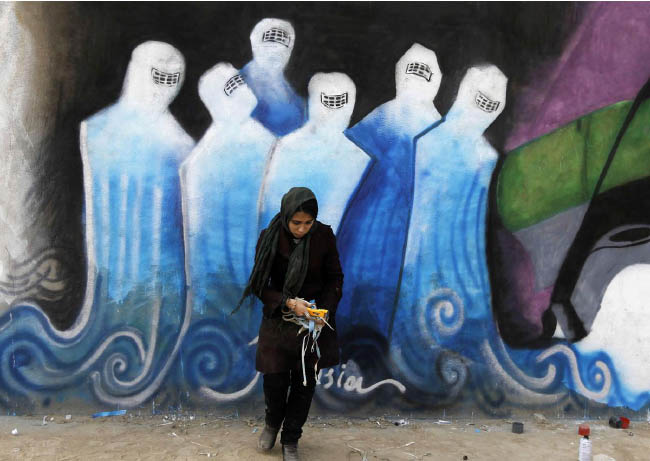Following the fall of the Taliban’s regime, the rights of women changed into a hotly debated discourse in Afghanistan. Women heaved a sigh of relief and geared up for playing their role in social, political and cultural arenas. Their active part in approving Constitution in 2004 in Kabul Loya Jirga (Grand National Assembly) and provincial and presidential elections was undeniable. The new constitution upheld their rights through defining equal rights and freedom for men and women regardless of their gender. But this issue also triggered a sense of sensitivity for traditional and tribal figures who were not able to reconcile their mindset and religious dilemma with modern discourse.
The Taliban regime denied women’s rights and freedoms claiming to protect Islamic values. This frame of mind changed into a deep-seated mentality and cultural tradition, mainly in tribal belts. That is to say, tribal areas adopted the same attitude towards women and deemed women inferior to men. They nurtured a misogynistic view and treated women harshly.
However, with the sudden political upheaval and women’s active part in social and political affairs, those who considered women inferior were shocked. Indeed, modern issues challenged their traditional mindsets. They had to either reconcile their traditional mentalities with modern discourse or raise their voice against this upheaval. A number of people from tribal belts adopted the first attitude through remaining indifferent to women’s rights and practiced their own religious beliefs in the four walls of their homes. However, those who lacked tolerance and were radicalized under the Taliban’s code of conduct, joined the Taliban guerilla fighters calling the democratic administration a “puppet government”. It was not acceptable for them that women, who were not allowed to go out without burqa (a head-to-toe covering for females) during the Taliban’s Islamic Emirate, suddenly appeared in social and political arenas claiming equal rights and liberty with men. The Taliban capitalized on the sentiment of radical-oriented individuals and prompted them to resort to arm against the government and foreign troops. They terrorized women, threatened and assassinated female police and politicians, conducted desert courts, barred girls from going to schools, etc. In brief, the Talibanic practices recurred in tribal areas and cultural restriction engulfed women in restive districts and Taliban-dominated areas.
The third group that cherished liberal ideas sought to empower women and support their rights and freedoms in accordance with new constitution. This group embraced modernity with all its products with open arms. Although their liberal approach towards women’s rights were in conflict with cultural tradition of Afghan society and, in some cases, with religious tenets, they did not hesitate to continue.
It is worth saying that high-profile Afghan religious scholars, both from Sunni and Shiite sects, had influential role in approving the constitution approved in Kabul Loya Jirga. They also endorsed the compatibility of the constitution with the United Nations Charter and the Universal Declaration of Human Rights (UDHR) – both recognize equal rights and dignity for men and women. Hence, men and women are equal in the eyes of national and international laws and there should be no discrimination on the basis of gender.
Despite this fact, discriminating women on the grounds of her gender is widespread in Afghanistan and misogynic views hold strong sway in some parts of the country. According to a recent report released by Human Rights Independent Commission about human rights in Afghanistan, violating the rights of mankind, mainly women, and dignity is widespread in the country. It says that cultural restrictions barred girls from selecting spouse freely in 1395 Afghan calendar. It also recorded forced marriages, honor-killings, desert courts and terrorist attacks regarding women stating that right to life has been extremely critical and cheap. Last year, about 5575 cases of violence against Afghan women were recorded, the report says. The violence includes physical, mental, sexual, verbal, and cultural violence. In short, the graph of violence mounted from the year 1394.
Home » Opinion » Widespread Violation of Women’s Rights
Widespread Violation of Women’s Rights
| Hujjatullah Zia

